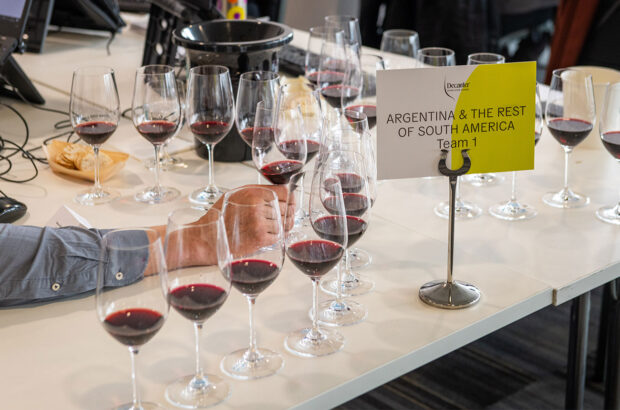Jane Anson offers a whirlwind tour of this second growth estate following a masterclass with 10 wines at the Decanter Shanghai Fine Wine Encounter...
‘Pauillac wine with a difference’
The Pauillac second growth, owned by Louis Roederer Champagne house and headed up by Nicolas Glumineau brought an amazing selection of stellar vintages to Shanghai back to 1996 direct from the château.
Château Pichon Longueville Comtesse de Lalande is a wine, as Glumineau told the room, ‘that is a Pauillac wine with a slight difference – an aromatic freshness and a touch of florality that makes it stand apart’.
The tasting started straight after lunch, but the room didn’t take long to fill up, with Glumineau looking as sharp as ever, handkerchief in pocket, well cut suit, highly-polished shoes, red socks. I am sat next to a Chinese journalist who lives locally and has been to every year of the Shanghai Fine Wine Encounter.
To kick off, Glumineau takes the room through the development of the estate, most notably its history of women at the helm, and the influence, from 1925 to 2007, of the Miahle family (ending with Edouard Miahle’s daughter May Eliane de Lencquesaing), who planted extensive Merlot at both Château Palmer and Pichon Lalande, explaining why historically both have been estates with higher Merlot in their vines than many neighboring Médocs (Pichon today is 62% Cabernet Sauvignon, 28% Merlot).
Glumineau also covered recent developments such as the move towards biodynamic farming on all newly planted plots, and the extensive improvements to the winemaking facilities, with an entirely new cellar completed for the 2013 vintage that allows for separate vinification of each individual plot across the vineyard.
The tasting itself showcased many of the greatest vintages of the past 20 years, with the chance to try both the first and second wines of the standout 2009 and 2010 vintages – so both Réserve de la Comtesse and Pichon Comtesse itself. I would suggest the 2009 Réserve is the best of the four for drinking today and over the next few years, as it is already displaying exceptionally seductive grilled red and black fruits and a generosity that showcases the best of the 2009 vintage.
The biggest surprise came with the 2003. The famously hot vintage has suffered from rapidly-ageing wines in many appellations, but this Comtesse remains exceptionally fresh, intense and spicy and still full of life. It’s a testament to the influence of terroir and microclimate, says Glumineau.
‘The proximity of our vineyard to the river really helped in 2003. It was true for the corridor of chateaux along the Garonne in St Julien, Pauillac and St Estèphe – so through Ducru Beaucaillou, Latour, Comtesse, Montrose and up to Sociando Mallet, with the river acting like an air conditioner and retaining freshness in the wines’.
Wines tasted:
Réserve de la Comtesse AOC Pauillac 2010
Réserve de la Comtesse AOC Pauillac 2009
Château Pichon Comtesse de Lalande AOC Pauillac 2010
Château Pichon Comtesse de Lalande AOC Pauillac 2009
Château Pichon Comtesse de Lalande AOC Pauillac 2008
Château Pichon Comtesse de Lalande AOC Pauillac 2005
Château Pichon Comtesse de Lalande AOC Pauillac 2003
Château Pichon Comtesse de Lalande AOC Pauillac 2001
Château Pichon Comtesse de Lalande AOC Pauillac 1996
Château Pichon Comtesse de Lalande AOC Pauillac 1995

Wine lovers meet ‘heroes’ at biggest Decanter Shanghai Fine Wine Encounter
See highlights from an extraordinary day of tasting....

Four decades of Lafite Rothschild
Inside the sell-out masterclass...







